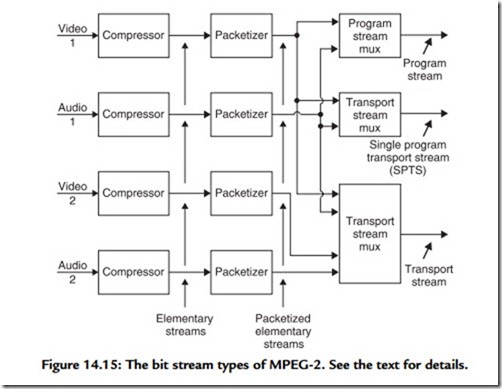Audio Compression
In its native form, high-quality digital audio requires a high data rate, which may be excessive for certain applications. One approach to the problem is to use compression, which reduces that rate significantly with a moderate loss of subjective quality. Because the human hearing system is not equally sensitive to all frequencies, some coding gain can be obtained using fewer bits to describe the frequencies that are less audible.
While compression may achieve considerable reduction in bit rate, it must be appreciated that compression systems reintroduce the generation loss of the analog domain to digital systems.
One of the most popular compression standards for audio and video is known as MPEG. Figure 14.15 shows that the output of a single MPEG compressor is called an elementary
stream. In practice, audio and video streams of this type can be combined using multiplexing. The program stream is optimized for recording and is based on blocks of arbitrary size. The transport stream is optimized for transmission and is based on blocks of constant size.
It should be appreciated that many successful products use non-MPEG compression. Compression and the corresponding decoding are complex processes and take time, adding to existing delays in signal paths. Concealment of uncorrectable errors is also more difficult on compressed data.
